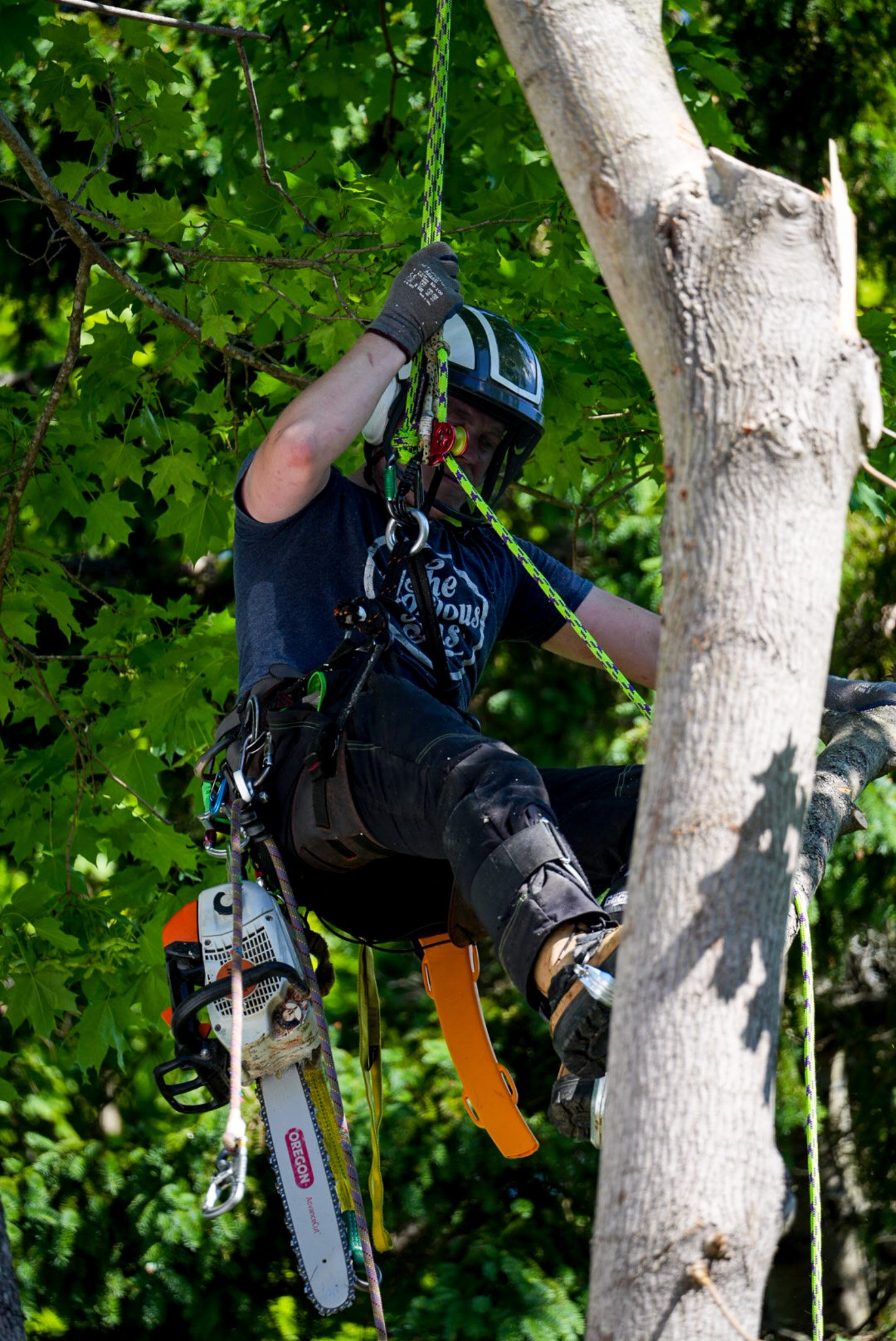
Tree Trimming & Pruning
Poorly pruned trees hurt more than just curb appeal. Tree trimming is critical to sustaining your tree’s health, but when done incorrectly, it can cause serious damage.
Proper Tree Trimming & Tree Pruning Is Both Science & Art
Tree trimming and tree pruning is critical to sustaining your tree’s health, stimulating growth and retaining its natural appearance, but do-it-yourselfers can often end up trimming incorrectly, causing serious damage to your beloved green asset.
The science involves a deep understanding of tree biology, recognizing plant flaws and skillfully eliminating or minimizing defects without hindering the tree’s growth or causing irreparable damages.

Objectives of Pruning
Increase life span
This starts with structural pruning at the nursery but trees require maintenance throughout all stages their life. It is important for young trees to be pruned to establish then maintain a dominant leader and create strong scaffold limbs. Developing strong structures increases trees lifespans by reducing the chance of failure later in their life.
Provide Clearance
Branches rubbing on your roof can cause pre-mature failure of your shingles, Make sure you’re getting the most of your roof by maintaining proper clearance. Installing a new line and Nova Scotia power requires you to have more clearance? or is your current line overgrown? We can help
Maintain or improve health
Pruning to remove dead, dying, diseased, broken, split branches or branches rubbing into each other.
Improve view
This could be accomplished by removing selective limbs or by a crown reduction. (Not to be confused with topping) or by a crown lift. Lean more about this in our FAQ section about pruning
Improve aesthetics
Rounding your tree/shrubs can significantly increase their aesthetics! Hand sheared boxwoods, hand clipped magnolias or hedge trimming a burning bush.

Strategies for Pruning Trees in Different Life Stages
Young Trees in the Nursery
Establish strong structure by developing one dominant trunk and horizontal branches
Space main branches along trunk by shortening some and remocuing others
Eliminate rubbing and touching branches
Establishing a pleasing form and full crown
Young Trees in the Landscape
Eliminate circling roots near the soil surface by cutting them so new roots can grow away from the trunk
Establish strong structure by developing and maintaining one dominant trunk
Remove or shorten aggressive branches, especially those growing vertically
Space main branches along trunk by shortening some and removing others
Eliminate touching branches
Medium-Aged Trees
Cut Girdling roots and other roots the circle close to the trunk so new roots can grow easily away from the trunk
Maintain or establish one dominant trunk by reducing length of others
Shorten branches below the lowest permanent limb
Shorten aggressive branches that will be in the way later
Prevent stems on low branches from growing up into the permanent crown
Space main branches 18 - 36 inches apart along the trunk by removing some and shortening others
Reduce length of overextended branches or those with bark inclusions
Remove dead branches where desirable
Eliminate rubbing or touching branches
Direct growth to fill gaps in the grown as desired
Mature Trees
Remove dead branches where desirable
Reduce length of overextended limbs or those with bark inclusions and cracks
Thin or reduce certain branches from the edge of the crown to reduce wind load
Remove as little live tissue as possible to accomplish objectives
Restore Trees damaged by storms or over pruning

Types of Pruning Cuts
Basically; There are three types of pruning cuts. Each is distinctly different and is used to accomplish unique objectives. Using one of three cut names: Reduction, Heading and removal.
A reduction cut reduces the length of a branch or stem back to a live lateral branch of sufficient size. This cut has been referred to as a lateral cut, bench cut or drop-crotch cut. Reduction cuts are normally used to correct defective structure in trees of all ages. This will be the cut we normally use when pruning for clearance.
A heading cut reduces the length of stem or branch without regard to the position or diameter of nearby lateral branches. This is only used on small twigs/branches and back to a dormant bud or a larger stem back to a node without an existing lateral.
A removal cut, sometimes called a collar cut removes a branch from the trunk or parent branch just outside the collar










